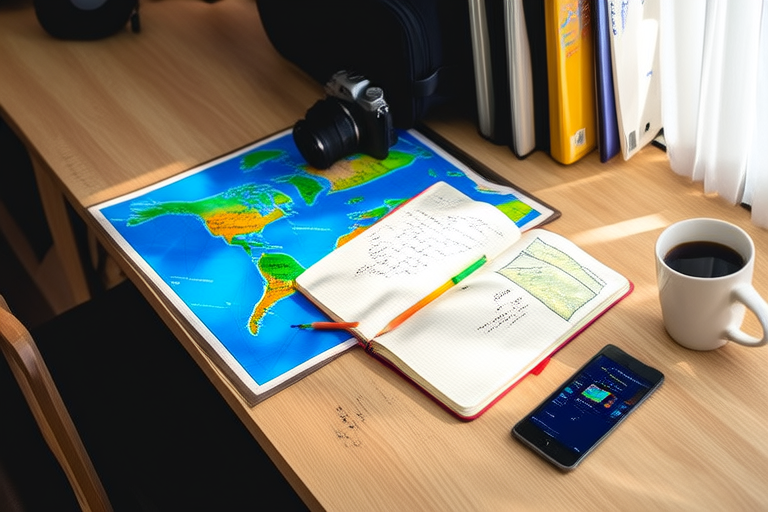Introduction: Why Planning Your Trip Matters
Traveling is an exciting adventure, but it can quickly turn into a stressful experience if you don’t plan properly. A well-thought-out itinerary ensures that you make the most of your time and money, while also reducing the chances of missing out on key attractions or getting lost in unfamiliar places. Whether you’re a seasoned traveler or just starting out, having a solid itinerary can help you stay organized and enjoy every moment of your trip. In this guide, we’ll walk you through the steps to create a perfect travel itinerary, from researching destinations to packing efficiently.
Step 1: Research Your Destination Thoroughly
The first step in planning any trip is understanding what you want to see and do at your destination. Start by gathering information about the place you’re visiting—its geography, culture, weather patterns, and popular tourist spots. Websites like TripAdvisor, Lonely Planet, and local tourism boards are excellent resources for this. Look for reviews and recommendations from other travelers who have visited recently.
Key Attractions vs. Hidden Gems
While iconic landmarks are essential, don’t forget about lesser-known spots that offer unique experiences. For example, instead of just visiting the Eiffel Tower in Paris, consider exploring Montmartre or strolling along the Seine River. This balance between famous sites and off-the-beaten-path locations will give you a more comprehensive view of the area.
Timing Is Everything
Check when peak seasons occur so you can avoid crowds or take advantage of special events. Also, be mindful of holidays and festivals which might affect transportation schedules or availability of accommodations.
Step 2: Create a Flexible Itinerary
Once you’ve gathered enough information about your destination, start building your itinerary. Keep in mind that flexibility is crucial; rigid plans often lead to disappointment when things don’t go as expected. Instead, outline each day with general activities and leave room for spontaneous adventures.
Daily Schedule
Break down your trip into days and allocate specific times for different activities. For instance, set aside mornings for sightseeing tours and afternoons for leisure activities such as shopping or relaxing by the beach. Be realistic about how much you can cover in one day without feeling rushed.
Emergency Time Slots
Include buffer periods between scheduled events to account for unexpected delays or changes. These gaps allow you to adjust your plans if needed without feeling overwhelmed.
Step 3: Book Accommodations and Transportation
Finding suitable lodging and transport options early on helps secure better rates and availability. When booking hotels or hostels, read reviews carefully and compare prices across multiple platforms to get the best deal. Similarly, arrange flights, trains, buses, or car rentals ahead of time to ensure smooth travel arrangements.
Budget Considerations
Consider all costs associated with your trip, including accommodation, meals, entertainment, souvenirs, etc., and allocate funds accordingly. Setting a budget beforehand prevents overspending and keeps your finances under control.
Alternative Transport Options
Explore alternative modes of transportation like public transit, bicycles, or walking tours if they suit your preferences better than traditional methods. Not only do these options save money, but they also provide deeper immersion into local life.
Step 4: Prepare for Practicalities
No matter where you go, there are certain practical aspects of traveling that require attention. Packing light yet effectively, obtaining necessary visas or vaccinations, and knowing basic phrases in the local language are all important considerations.
Packing List Essentials
Make sure to pack items tailored specifically for your destination. Include essentials like sunscreen, insect repellent, adapters, and appropriate clothing. Don’t forget digital copies of important documents such as passports and insurance policies stored safely in cloud storage.
Safety Measures
Stay informed about current safety advisories related to your chosen destination. Register with your country’s embassy or consulate abroad for added security. Familiarize yourself with emergency contacts and procedures should anything arise during your stay.
Real-Life Example: Planning a Weekend Getaway
Let’s say you’re planning a short weekend trip to New York City. After doing some research, you decide to focus on Central Park, Times Square, and Broadway shows. You book a mid-range hotel near Union Square and purchase round-trip tickets via Amtrak. On Day One, you plan to visit Central Park in the morning followed by lunch at a nearby café. Afterward, you explore Times Square before catching a Broadway performance. Day Two starts early with breakfast at a trendy bistro before heading over to the Metropolitan Museum of Art. Lunch breaks are scheduled around 1 PM, allowing ample time for digestion and relaxation. Finally, you end the day with dinner at an Italian restaurant downtown.
Conclusion: Putting It All Together
Creating a perfect itinerary takes careful consideration and preparation, but it ultimately leads to a smoother and more enjoyable travel experience. By thoroughly researching your destination, creating a flexible schedule, securing accommodations and transportation, and preparing practically, you set yourself up for success. Remember, the goal isn’t perfection but rather maximizing enjoyment within reasonable limits. Happy travels!
